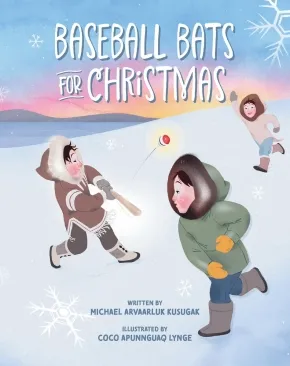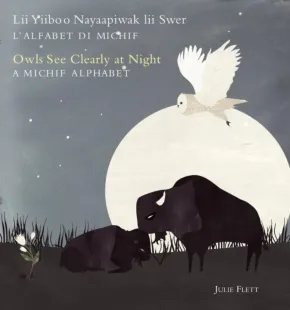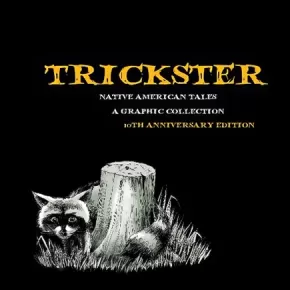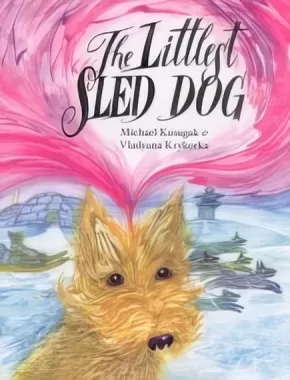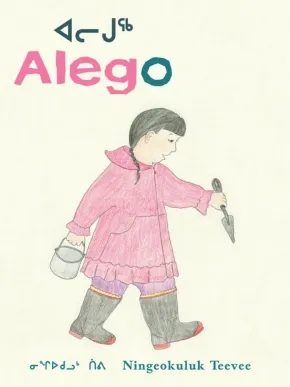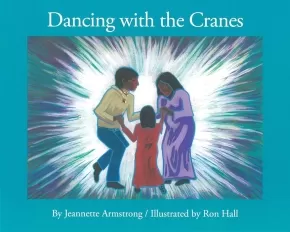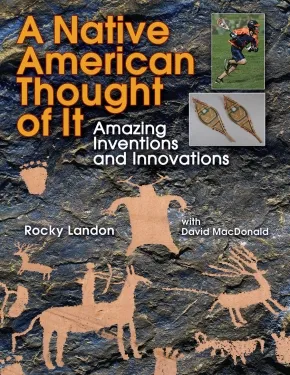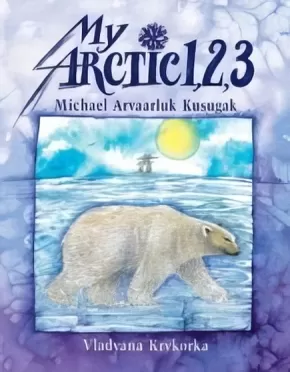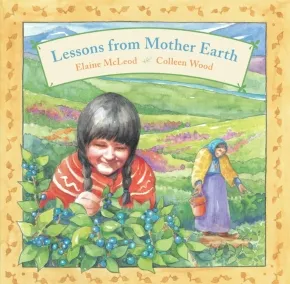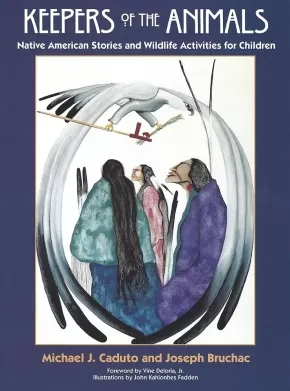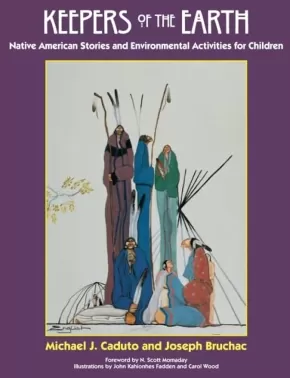
Grade 3
1
-
13
of
13 Results;
Sort By
Literature to Support First Nations, Métis and Inuit(FNMI) Student Success was developed by the Southern Alberta Professional Development Consortium. Date Published: June 2010
Click the following link to download a copy of the resource for this grade: (FNMI) Student Success - Grade 3
Baseball Bats for Christmas
$24.99
Artists:
Format:
Hardcover
Text Content Territories:
Indigenous Canadian; Inuit;
ISBN / Barcode: 9781773219721
Synopsis:
Synopsis:
Celebrate the 35th anniversary of this beloved holiday classic with a fresh edition that preserves the magic of the original story and brings it to life with stunning new illustrations.
The year is 1955. Arvaarluk and his friends watch Rocky Parsons land his plane on the ice in Repulse Bay, a tiny community “smack dab on the Arctic Circle.” Having never seen trees before, the children try to guess what the six green spindly things are that Rocky delivers. One of the boys has a brilliant idea: why not use them as baseball bats?
Michael Arvaarluk Kusugak is one of Canada’s foremost storytellers. Baseball Bats for Christmas captures the warmth and cadence of his voice as he describes the close-knit life of his community and the ingenuity he and his friends demonstrated when faced with something wholly unfamiliar.
Award-winning Inuk illustrator Coco Apunnguaq Lynge draws inspiration from the iconic work of Inuk artist Germaine Arnaktauyok to immerse the reader in the beauty of the Arctic landscape.
Educator Information
Recommended for ages 5 to 8.
Themes: Inuit; Arctic; community; multicultural; friends; resourcefulness.
Additional Information
32 pages | 8.50" x 10.75" | Hardcover
Owls See Clearly at Night/Lii Yiiboo Nayaapiwak lii Swer: A Michif Alphabet/L'Alfabet Di Michif
$25.85
Artists:
Format:
Hardcover
Text Content Territories:
Indigenous Canadian; Métis;
ISBN / Barcode: 9781772290592
Synopsis:
Synopsis:
This picture book is a small glimpse, from A to Z, of some of the sights and sounds of the Michif language and its speakers.
The language of the Metis, Michif is a combination of French and Cree with a trace of other regional languages. Once spoken by thousands of people across the prairies of Canada and the northern United States, Michif is now so little spoken that it might disappear within a generation.
This alphabet book is part of a resurgence to celebrate and preserve the traditions of the Metis people. Here Michif and English words combine with images from Metis culture to introduce all generations to the unique Michif language. The book even includes a brief introduction to the language's history, a pronunciation guide, and a list of references for those interested in learning more about Michif.
Educator Information
Recommended for ages 5 to 8.
Dual-language: English and Michif.
Additional Information
56 pages | 8.25" x 9.00" | Hardcover
Trickster: Native American Tales, A Graphic Collection, 10th Anniversary Edition
$39.95
Editors:
Format:
Paperback
Text Content Territories:
Indigenous American; Native American;
ISBN / Barcode: 9781682752739
Synopsis:
Synopsis:
All cultures have tales of the trickster, a crafty creature or being who uses cunning to get food, steal precious possessions, or simply cause mischief. He disrupts the order of things, often humiliating others and sometimes himself. In Native American traditions, the trickster takes many forms, from coyote or rabbit to raccoon or raven. The first graphic anthology of Native American trickster tales, Trickster brings together Native American folklore and the world of comics.
In Trickster more than twenty Native American tales are cleverly adapted into comic form. Each story is written by a different Native American storyteller who worked closely with a selected illustrator, a combination that gives each tale a unique and powerful voice and look. Ranging from serious and dramatic to funny and sometimes downright fiendish, these tales bring tricksters back into popular culture in a very vivid form. From an ego-driven social misstep in "Coyote and the Pebbles" to the hijinks of"How Wildcat Caught a Turkey" and the hilarity of "Rabbit's Choctaw Tail Tale", Trickster provides entertainment for readers of all ages and backgrounds.
Additional Information
248 pages | 8.00" x 8.00" | Paperback
A Promise Is a Promise: 30th Anniversary Edition
$7.95
Artists:
Format:
Paperback
Text Content Territories:
Indigenous Canadian; Inuit;
ISBN / Barcode: 9781773212937
Synopsis:
Synopsis:
When Allashua disobeys her parents and goes fishing on the sea ice, she has to use her wits to escape the Qallupilluit--the troll-like creatures her parents have always warned her about that live beneath the frozen surface of the sea. But the only way to break out of their grasp is through an exchange: Allashua can go free if she brings her brothers and sisters back to the sea ice instead. Allashua doesn't want to give them up, but what can she do? After all, a promise is a promise.
Educator Information
A Promise Is a Promise is a collaboration between award-winning storyteller Michael Kusugak and celebrated children's author Robert Munsch. This 30th anniversary edition brings all of the tension of the traditional Inuit story to a new generation of readers. Added features include a new foreword by Michael Kusugak on his role as a storyteller and the importance of storytelling in Inuit culture.
This resource is also available in French: Une Promesse, C'est Une Promesse
Additional Information
32 pages | 7.80" x 7.90"
The Littlest Sled Dog
$12.95
Format:
Paperback
Text Content Territories:
Indigenous Canadian; Inuit;
ISBN / Barcode: 9781554691746
Synopsis:
Synopsis:
Igvillu is a little dog with big dreams. One of her favorite dreams is of becoming a sled dog. When Igvillu is adopted from her kennel by an Inuit storyteller and moves to northern Canada, she comes face-to-face with real sled dogs. Igvillu loves living in the North, chasing siksiks and dreaming about her future. She''s a dog who believes anything is possible!
Alego
$17.99
Artists:
Format:
Hardcover
Text Content Territories:
Indigenous Canadian; Inuit;
ISBN / Barcode: 9780888999436
Synopsis:
Synopsis:
Alego is a beautifully simple story, written in Inuktitut and English, about a young Inuit girl who goes to the shore with her grandmother to collect clams for supper. Along the way she discovers tide pools brimming with life -- a bright orange starfish, a creepy-crawly thing with many legs called an ugjunnaq, a hornshaped sea snail and a sculpin.
Written and illustrated by Ningeokuluk Teevee, one of the most interesting young artists in Cape Dorset, home to the great tradition of Inuit art, this is an enchanting and utterly authentic introduction to the life of an Inuit child and her world.
Educator Information
Alego includes an illustrated glossary of sea creatures as well as a map of Baffin Island. Ages 4-7.
This book is delivered in a dual-language format, written in Inuktitut and English.
Curriculum Connections: Social Studies, Science, Visual Arts.
Additional Information
24 pages | 7.63" x 9.63"
Dancing with the Cranes
$14.95
Artists:
Format:
Paperback
Text Content Territories:
Indigenous Canadian; First Nations; Salish; Interior Salish; Syilx (Okanagan);
ISBN / Barcode: 9781894778701
Synopsis:
Synopsis:
Dancing with the Cranes gives an understanding of birth, life and death. Chi's momma is soon to have a baby, but Chi is having a hard time being happy about it. Chi misses Temma (her grandma), who has passed away. Chi's momma and daddy help ease the pain of losing Temma and help Chi to understand life and death as a part of nature. Chi soon finds herself feeling comforted, knowing Temma will always be a part of her and looking forward to the new baby who will be a part of their lives.
Educator Information
Recommended for 6 to 8.
Additional Information
24 pages | 7.97" x 9.95"
A Native American Thought of It: Amazing Inventions and Innovations
$9.95
Format:
Paperback
Text Content Territories:
Indigenous American; Indigenous Canadian;
ISBN / Barcode: 9781554511549
Synopsis:
Synopsis:
Inventiveness and ingenuity from North America's First Nations.
Everyone knows that moccasins, canoes and toboggans were invented by the Aboriginal people of North America, but did you know that they also developed their own sign language, as well as syringe needles and a secret ingredient in soda pop?
Depending on where they lived, Aboriginal communities relied on their ingenuity to harness the resources available to them. Some groups, such as the Iroquois, were particularly skilled at growing and harvesting food. From them, we get corn and wild rice, as well as maple syrup.
Other groups, including the Sioux and Comanche of the plains, were exceptional hunters. Camouflage, fish hooks and decoys were all developed to make the task of catching animals easier. And even games-lacrosse, hockey and volleyball -- have Native American roots.
Other clever inventions and innovations include:
* Diapers
* Asphalt
* Megaphones
* Hair conditioner
* Surgical knives
* Sunscreen.
With descriptive photos and information-packed text, this book explores eight different categories in which the creativity of First Nations peoples from across the continent led to remarkable inventions and innovations, many of which are still in use today.
Educator & Series Information
This book is a part of the We Thought of It series, a series which takes readers on a fascinating journey across the world's second largest continent to discover how aspects of its culture have spread around the globe.
Additional Information
48 pages | 8.50" x 11.00"
The Inuit Thought of It: Amazing Arctic Innovations
$9.95
Format:
Paperback
Text Content Territories:
Indigenous Canadian; Inuit;
ISBN / Barcode: 9781554510870
Synopsis:
Synopsis:
Dazzling inventions from the far north.
Today's Arctic communities have all the comforts of modern living. Yet the Inuit survived in this harsh landscape for hundreds of years with nothing but the land and their own ingenuity. Join authors Alootook Ipellie and David MacDonald as they explore the amazing innovations of traditional Inuit and how their ideas continue to echo around the world.
Some inventions are still familiar to us: the one-person watercraft known as a kayak retains its Inuit name. Other innovations have been replaced by modern technology: slitted snow goggles protected Inuit eyes long before sunglasses arrived on the scene. And other ideas were surprisingly inspired: using human-shaped stone stacks (lnunnguat) to trick and trap caribou.
Many more Inuit innovations are explored here, including:
- Dog sleds
- Kids' stuff
- Shelter
- Food preservation
- Clothing
- Medicine.
In all, more than 40 Inuit items and ideas are showcased through dramatic photos and captivating language. From how these objects were made, to their impact on contemporary culture, The Inuit Thought of It is a remarkable catalog of Inuit invention.
Educator & Series Information
Recommended Ages: 10-12.
B.C. Science Supplementary Resource: Gr.3- Physical Science
B.C. Science Supplementary Resource Gr.4- Life Science
This book is a part of the We Thought of It series, a series which takes readers on a fascinating journey across the world's second largest continent to discover how aspects of its culture have spread around the globe.
Additional Information
32 pages | 8.50" x 11.00"
My Arctic 1,2,3
$9.95
Artists:
Format:
Paperback
Text Content Territories:
Indigenous Canadian; Inuit;
ISBN / Barcode: 9781550375046
Synopsis:
Synopsis:
Readers discover counting and creatures, and learn who's predator and who's prey. They witness five Arctic foxes hunting six furry siksiks. They watch seven fisherman catch eight Arctic char. Numbers explored include 1 to 10, 20, 100 and even 1,000,000 millions of berries ripen in the fall.
Reviews
"From one polar bear walking along the edge of a huge ice floe to millions of berries ready for picking, My Arctic 1, 2, 3 takes young readers on a counting tour in the Far North. With the rich Arctic environment as a background, this classic not only provides small children with opportunities to practice their counting skills, it introduces them to the extraordinary animals that make the Far North their home. Stunning artwork, the author's memories of life in the Arctic and information about many of the featured animals make My Arctic 1, 2, 3 the perfect book for families to share and cherish. You can count on it!" - Parent Council
"A fascinating tale... The book is well thought out, colourful and imaginative, giving us a glimpse of life in the vast Arctic. Recommended."
— Naomi Gerrard, reviewer for Amelia Frances Howard-, Children's Materials, Vol. 3, No. 2, September 1996
"Emerging readers will appreciate the easy-to-read, large print...A unique addition for libraries, particularly those building multicultural or Arctic-region collections." — School Library Journal
Educator Information
Recommended Ages: 4-6.
Numbers are in Inuktitut and English.
Additional Information
24 pages | 8.25" x 10.50"
Lessons From Mother Earth
$10.99
Artists:
Format:
Paperback
Text Content Territories:
Indigenous Canadian; First Nations; Tutchone; Northern Tutchone; Na-Cho Nyak Dun;
ISBN / Barcode: 9780888998323
Synopsis:
Synopsis:
This gentle story demonstrates the First Nations' tradition of taking care of Mother Earth.
Tess has visited her grandmother many times without really being aware of the garden. But today when they step out the door, Tess learns that all of nature can be a garden. And if you take care of the plants that are growing, if you learn about them - understanding when they flower, when they give fruit, and when to leave them alone - you will always find something to nourish you.
At the end of the day, Tess is grateful to Mother Earth for having such a lovely garden, and she is thankful for having such a wise grandma.
Elaine McLeod's poetic text and Colleen Wood's gentle watercolors combine to make Lessons from Mother Earth a celebration of nature and life.
Educator Information
Curriculum Connections: Social Studies, Science and Nature.
Additional Information
24 pages | 8.80" x 8.80"
Keepers of the Animals: Native American Stories and Wildlife Activities for Children
$33.95
Format:
Paperback
Text Content Territories:
Indigenous American; Native American;
ISBN / Barcode: 9781555913861
Synopsis:
Synopsis:
Part of the bestselling "Keepers" series, Keepers of the Animals encourages an early interest in wildlife and the environment through Native stories and legends and extensively tested activities for children aged 5 to 12.
Perfect for classroom and home use, this interdisciplinary book teaches children to appreciate Native cultures and heritage while learning about North American animals, insects, fish, reptiles, and birds.
From the Introduction: Keepers of the Animals continues the tradition established by its highly popular and critically acclaimed predecessor, Keepers of the Earth. Here each parent, teacher, naturalist and storyteller is given the tools to bring the wonder and magic of the stories and lessons into the lives of children by empowering them with knowledge, skills and enjoyment found in the activities. This book is about learning to understand, live with and care for the animals: A gathering of carefully selected Native North American animal stories and hands-on activities that promote an understanding of, appreciation for, empathy with and responsible stewardship toward all animals on Earth, including human beings.
Educator & Series Information
B.C. Science Supplementary Resouce Gr.4- Life Science.
This book is part of the Keepers series.
Foreword by Vine Deloria, Jr.
Additional Information
288 pages | 8.35" x 11.00"
Keepers of the Earth: Native American Stories and Environmental Activities for Children
$33.95
Format:
Paperback
Text Content Territories:
Indigenous American; Native American;
ISBN / Barcode: 9781555913854
Synopsis:
Synopsis:
Native American stories combine with related hands-on activities to inspire children with a deep respect and interest in the Earth and in Native cultures in this popular and critically acclaimed book. Keepers of the Earth uses an interdisciplinary approach to introduce environmental concepts to children, aged five through twelve. The activities include theatre, reading, writing, science, social studies, and mathematics, and are designed to engage all of the senses.
Reviews
"Keepers of the Earth is an excellent school resource introducing children to Aboriginal worldviews. The book is comprised of 21 story packages which may be used as teaching tools in the classroom. The stories are divided by subject nature and include three stories about creation, two about fire, one about the earth, one about wind and weather, three about water, two about sky, one about seasons, six about plants and animals, one about life, death, and spirits, and about the unity of earth.... Following each story is a discussion prompt to help teachers explain the story’s context. The discussion prompts relate the story to First Nations traditional worldviews and emphasize mankind’s interconnection with the natural world. Following the discussion prompts, there is a list of questions to encourage student reflection. Some of the questions are focussed more on story comprehension while others encourage children to reflect on the greater meaning of the story and how it relates to their daily life.... Keepers of the Earth offers suggestions for activities to solidify and expand the learning of the story. Activity suggestions include field trips, demonstrations, experimentationand further discussion. Each story is accompanied by at least one activity with recommendations as to which age group tocater the activityto. While most of the activities seem directed at grades 3-8, there are many activities that could suit the needs of older or younger children with little or no modification." - Rachel Yaroshuk, CM Magazine
Educator & Series Information
This book is part of the Keepers Series.
Foreword by N. Scott Momaday.
Additional Information
240 pages | 8.25" x 10.72"
Sort By

